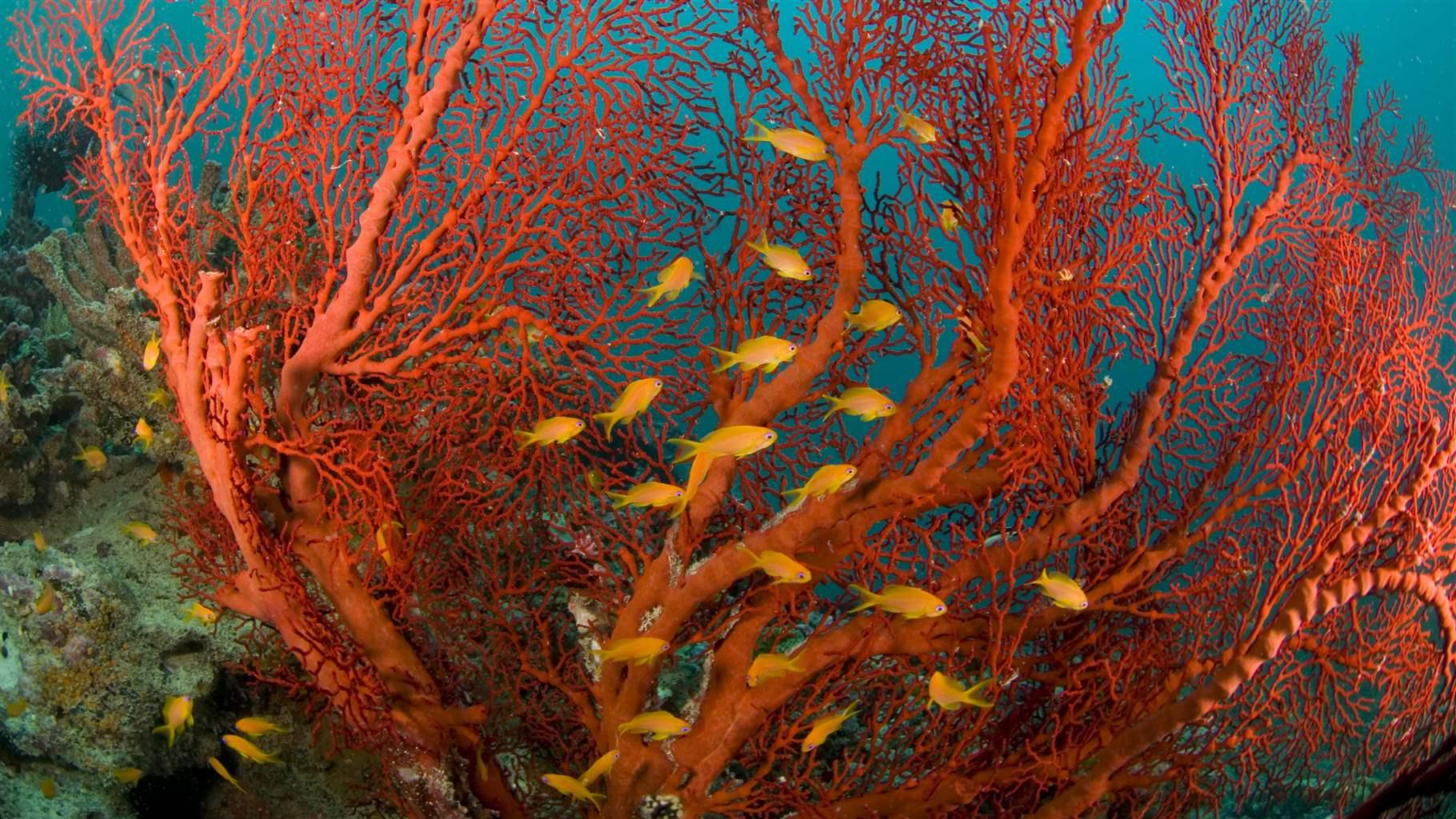Biodiversity Summit Offers Nations Unique Chance to Help Nature—and People
After four years of talks, negotiators in Montreal could agree on meaningful, achievable goals

The drumbeat of news on the health of our planet continues to bring a mix of hope and serious concern, with governments worldwide striving to both support the sustainability of nature and help people thrive. This backdrop adds urgency to an already critical meeting, the 15th Conference of the Parties to the United Nations Convention on Biological Diversity (CBD), or COP 15, scheduled for Dec. 7-19 in Montreal.
Government officials, Indigenous peoples and local communities, nongovernmental organizations, business leaders, and youth from around the world will attend COP 15 in hopes of advancing several issues, including:
Securing a new agreement for nature
If the COP 15 negotiations are a success, at the end of the meeting nations will adopt the Global Biodiversity Framework (GBF), which will map out 22 targets to be met by 2030, and four longer-term overarching goals with deadlines through 2050. The plan will seek to restore the health of the planet so that it can support people and nature over the long term. Governments and others will achieve this goal through a combination of increased protection of lands, waters, and wildlife; reduced pollution; more sustainable fisheries; and sustained financing.
Nations have been negotiating the GBF for over four years, with the topline goal to achieve a “world living in harmony with nature” by 2050—and they are close to an agreement. World leaders, businesses, and the public are paying close attention to the progress, suggesting the results of COP 15 could translate to policies that make a real, positive difference in coming years.
Protecting at least 30% of the planet by 2030
The call by over 110 nations to protect at least 30% of the Earth’s ocean, lands, and freshwater by 2030, known as 30 by 30, secured a recent boost when 15 West African nations expressed their commitment to this target. Other recent supporters for 30 by 30—Target 3 in the GBF—include the governments of the Philippines and Thailand, signaling important momentum in Southeast Asia. This deep support for 30 by 30 stems from the growing scientific consensus that these protections are needed to sustain biodiversity and its benefits to people over the long term.
Ensuring 30 by 30 protections are meaningful
Science shows that the specific rules set for protected and conserved areas—and enforcement of those measures—is as important to the success of the areas as their size. Essentially, areas that are highly or fully protected, well-managed, and sufficiently funded are far more effective than those that are not in delivering tangible benefits for both biodiversity and people. In the marine realm, it is particularly important to ensure protected areas are safeguarded from environmentally damaging activities such as bottom trawling, oil and gas exploration, and industrial-scale fishing. COP 15 negotiators convening in Montreal must ensure the 30 by 30 target prohibits these harmful activities in protected and conserved areas.
Paying for the agreement
The issue of how to finance the new GBF will be front and center at COP 15. Negotiators will need to address the financing gap between what is needed to sufficiently protect global biodiversity and what is available now.
Although there is a significant shortfall to make up, humankind will pay a higher cost in the future if we do not act today. Closing this gap will require a multipronged approach, including a reduction—and ultimately the elimination—of harmful subsidies, increased efficiency in current spending, acceleration of sustainable finance mechanisms, and increased financial commitments from:
- Donor countries such as the United States, the United Kingdom, Canada, members of the European Union, and others.
- All nations through the establishment of national biodiversity finance plans and shifting spending from harmful subsidies to conservation efforts.
- Philanthropies, private donors, and public sector partners.
Further, strategic investments in nature-based solutions to climate change and other threats to people and biodiversity can help reduce the costs and impacts from floods, storms, and extreme weather. The wide array of nature-based solutions includes healthy reefs and mangrove forests, living shorelines, restored stream beds, free-flowing rivers, large green spaces in flood plains, and much more. Such solutions help nations and communities adapt to the changing climate and bolster economies, for example through nature-based tourism.
Delivering the Global Biodiversity Framework
COP 15 is a two-week negotiation, after which the focus will shift toward implementing the agreed framework. Pew is committed to supporting country-led conservation efforts through our project work and partnerships such as Blue Nature Alliance, the Pew-Bertarelli Ocean Legacy Project, and Enduring Earth, the latter of which aims to protect half a billion hectares by 2030, working with at least 20 nations and mobilizing nearly $4 billion in new funding. Enduring Earth uses the project finance for permanence (PFP) model, which engages stakeholders and secures investment in conservation by tying sustained funding to measurable goals, including social and environmental gains. Five countries have already successfully deployed the PFP approach, providing a tangible example of how to support durable conservation and implementation over the next decade.
Negotiators in Montreal must recognize the urgency of their work and reach a consensus that can help safeguard the future of our planet and all life here, including people.
Masha Kalinina coordinates The Pew Charitable Trusts’ cross-campaign efforts with the United Nations Convention on Biological Diversity.












